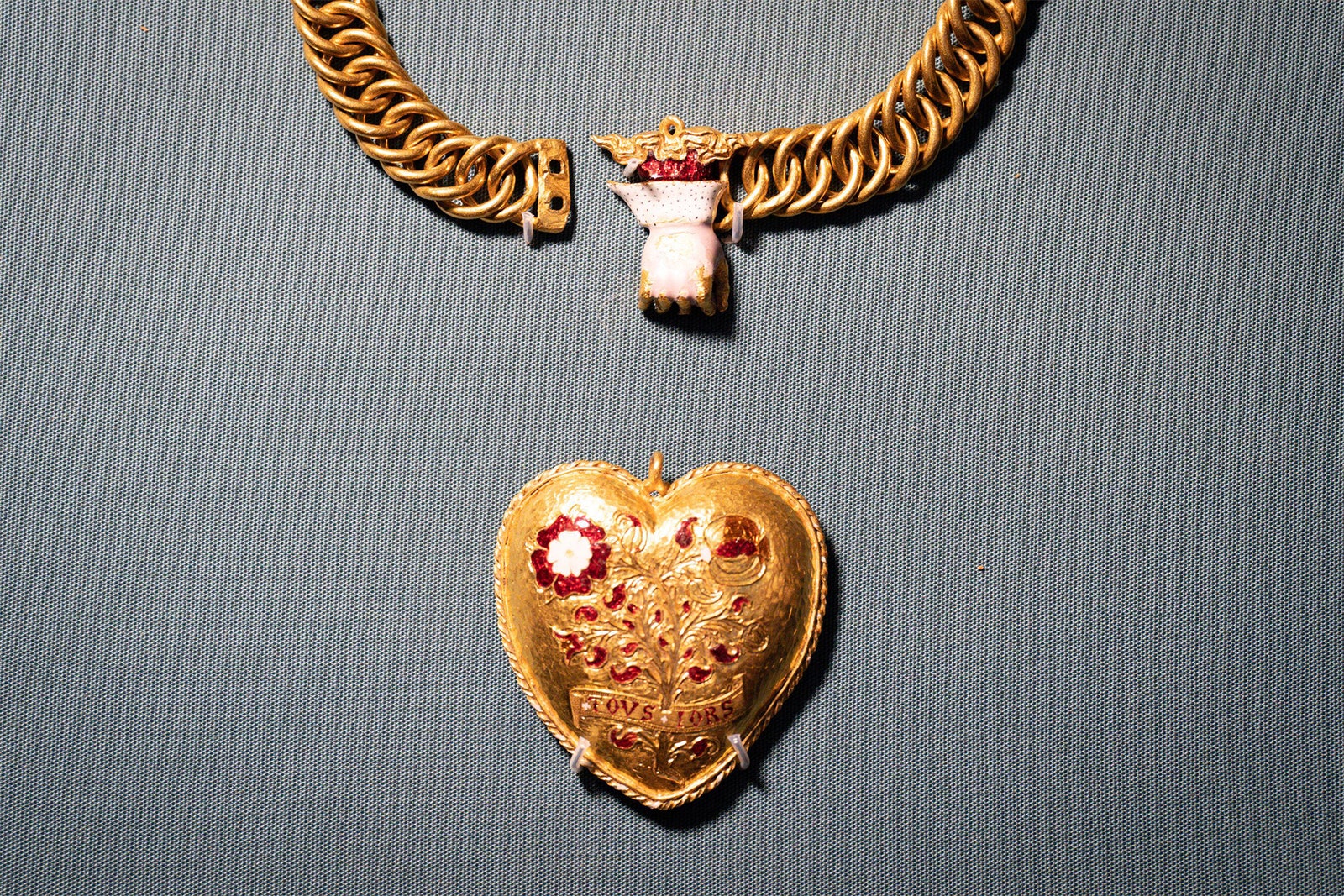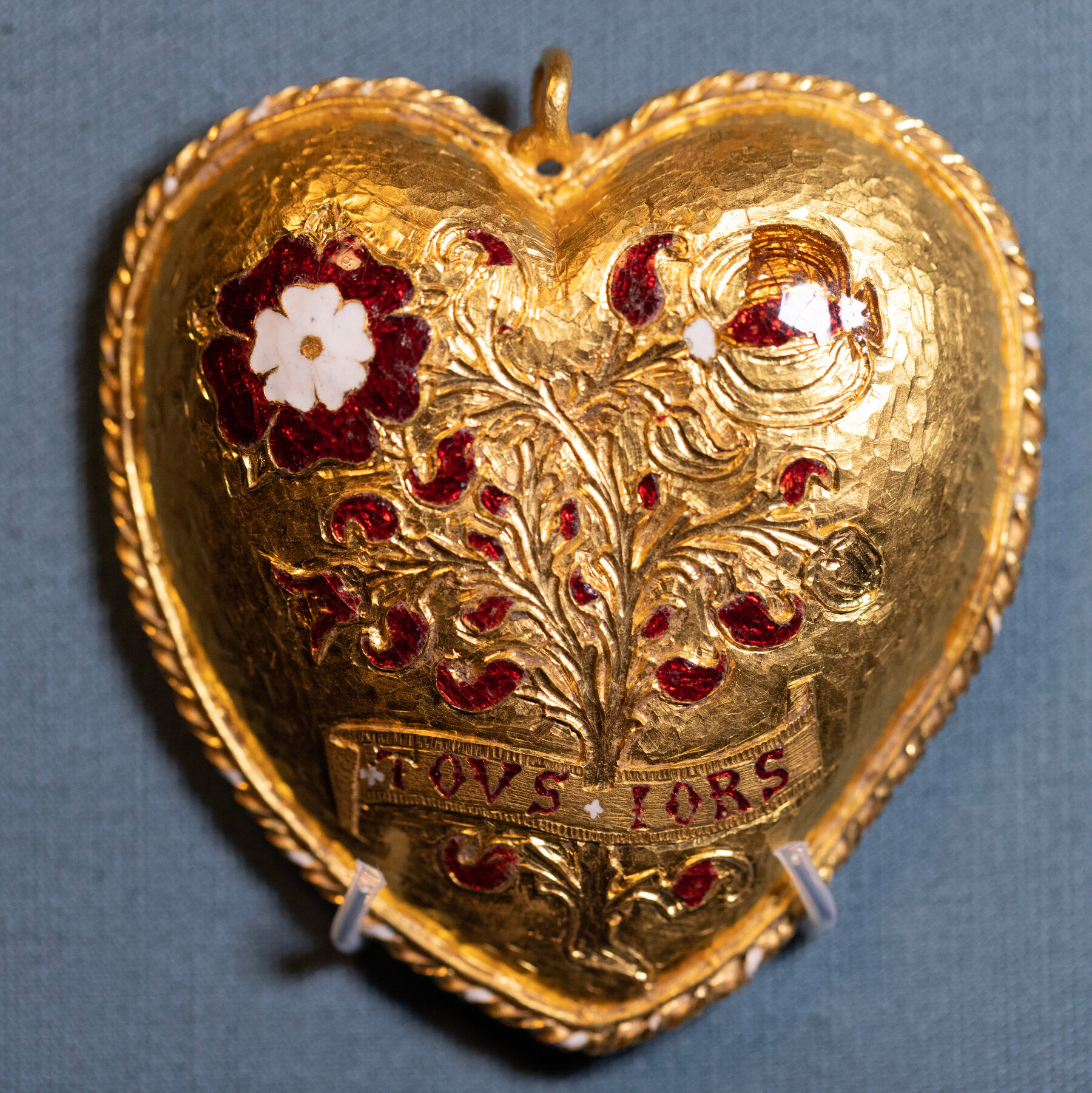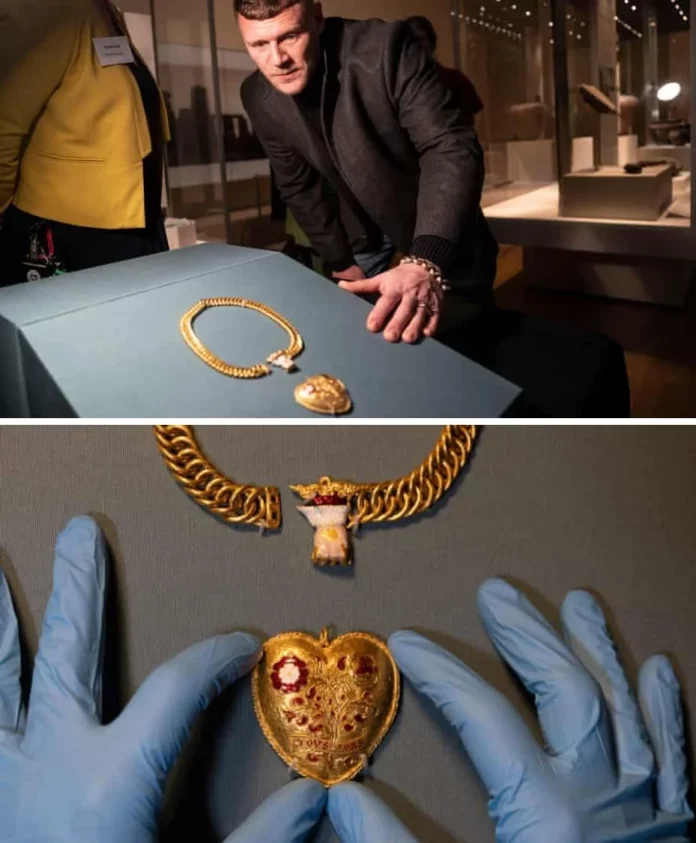In a remarkable find that sheds light on England’s royal history, a stunning Tudor gold pendant associated with King Henry VIII and Katherine of Aragon has been uncovered by a metal detector enthusiast. This significant discovery, made by Charlie Clarke in Warwickshire, UK, has recently been revealed by the British Museum.
Discovery and Reporting

Under the Treasure Act of 1996, any potentially valuable finds must be reported to local authorities. Charlie Clarke dutifully followed this protocol by reporting the pendant to the local Finds Liaison Officer at the Portable Antiquities Scheme, employed by the Birmingham Museum Trust. This led to further involvement from Historic England, which conducted an archaeological excavation at the discovery site to better understand the pendant’s historical context. The investigation, however, did not uncover any additional artifacts.
Historical Significance

Henry VIII, who reigned over England from April 22, 1509, until his death in 1547, is renowned for his six marriages and the turbulent annulment of his first marriage to Katherine of Aragon. The gold pendant, dating from the early 16th century—specifically between 1509 and 1533, with a probable date of around 1521—bears a heart-shaped design that links directly to this historic couple.
The pendant is intricately designed with a red and white Tudor rose entwined with a pomegranate bush, emblematic of Henry and Katherine. The motif is encircled by an inscription “+ TOVS + IORS,” a playful take on the French word for “always.” The reverse side of the pendant features the letters “H” and “K,” representing Henry and Katherine, connected by a ribbon and the same inscription.

The pendant is attached to a 75-link gold chain by an enamelled ‘hand,’ and its design suggests it may have been created for a specific event or as a prize. Historic England’s analysis indicates that the pendant’s design is similar to those used on horse bards during a joust held in Greenwich in 1521, hinting at its possible ceremonial or celebratory purpose.
Broader Impact
Lord Parkinson of Whitley Bay, Arts & Heritage Minister, praised the thriving field of archaeology and metal-detecting, which continually contributes to our understanding of national history. Supported by the Treasure Act, these discoveries are preserved in museums across the UK, allowing the public to enjoy and learn from them.

The British Museum’s Treasure Annual Report and Portable Antiques Scheme (PAS) Annual Report also highlight other significant finds, including a medieval silver strap-end discovered in Hampshire. This 14th-century object, decorated with animal motifs, was likely used by a merchant, showcasing the diverse range of artifacts unearthed through metal-detecting efforts.
Conclusion
The discovery of the Tudor gold pendant not only enriches our knowledge of England’s royal past but also underscores the importance of metal-detecting and archaeological reporting. As these practices continue to thrive, they provide invaluable insights into historical events and figures, preserving them for future generations to explore and appreciate.
